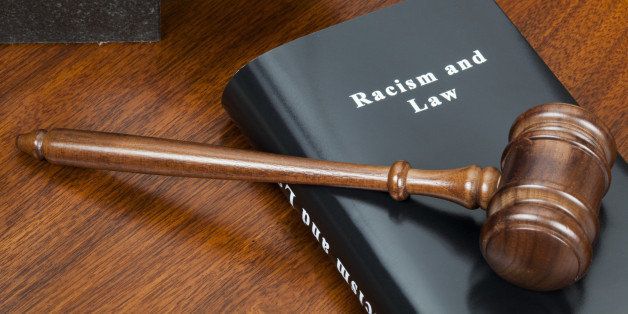
In a 4-3 ruling, SCOTUS has ruled that race-based "affirmative action" polices are constitutional. Affirmative action lives. Sort of. Much ink has been spilled on Fisher v. University of Texas since it first went to the high court in 2013 and then, like Lazarus, rose again in 2016. Many angles have been explored in debate over this case and the place of race in a diverse and unequal social order that is the twenty-first United States.
First, the facts. Many social scientists and legal scholars have highlighted key contradictions at the heart of this case that should have made the presentation of injury a dubious proposition at best. For instance, Abigail Fisher sued on the grounds that she was denied admission to the University of Texas at Austin (UTA) because she was White; the logic being that lesser qualified students of Color took "her spot." Yet, the facts tell a different story. While it is true that one African American and four Latinx applicants with lower combined academic and personal achievement scores than Fisher's were admitted, so were 42 other White applicants whose scores were identical to or lower than Fisher's. On top of this, 168 African American and Latinx students with academic and personal achievement profiles equal to or better than Fisher were denied admission--demonstrating that if there was a racial bias, it was pro-White (Bouie 2015). UTA showed that even if Fisher received a racial advantage, it would not have made her application above the standard admission cut-off (Kohn 2013).
Second, the feelings. Many have used this case as a yet another opportunity to proclaim that affirmative action policies unfairly play the "race card" to the disadvantage of Whites. While approximately two-thirds of young White women in the U.S. are opposed to affirmative action policies (Cooperative Congressional Election Study 2014), the group that has benefited most from affirmative action is White women. Affirmative action policies have addressed some racial and gender bias; today, women are now more likely to graduate with bachelor's degrees and attend graduate school than men (Bidwell 2014). This has had a huge impact in women's post-collegiate lives. For example, in 1970, only 9.7 percent of U.S. physicians and 4.9 percent of lawyers were women, but by 2010, 32.4 percent of physicians and 33.4 percent of lawyers were women (Mitchell 2012). Importantly, these numbers are made up mostly of White women, not women of Color. Affirmative action is neither perfect nor are many of its interpretations.
Third, the function. Some argue that affirmative action is necessary to produce a diverse and more equitable environment. Created in 1961 by an executive order by president John F. Kennedy, the program of affirmative action was designed to prevent racial discrimination in workplaces and schools. As applied to colleges and universities, it means that admissions committees can consider the race of applicants (along with hundreds of other variables) in decisions to admit students. The program has been controversial. For example, in 1978 a White applicant to the University of California at Davis medical school sued after he was denied admission. The case went to the Supreme Court (Regents of the University of California v. Bakke). The Court then ruled that schools could not use racial quotas, but that race itself could be used as one of many factors in determining admission. In 1996, California voters passed Proposition 209 which banned the use of race in college and university admissions, which led to an immediate reduction in students of color attending both UC Berkeley (a 61% reduction) and UCLA (a 35% reduction). Hence, some have said that without strong affirmative action policies, students of color would be kept out of elite, predominately White schools, under the logic that they are not well-equipped to learn within elite, majority White schools. Such a rationale was exposed in 2015 during arguments over the affirmative action case of Fisher v. University of Texas, when the late Justice Antonin Scalia said:
There are those who contend that it does not benefit African Americans to get them into the University of Texas, where they do not do well, as opposed to having them go to a less-advanced school, a slower-track school where they do well. One of the briefs pointed out that most of the black scientists in this country don't come from schools like the University of Texas. They come from lesser schools where they do not feel that they're being pushed ahead in classes that are too fast for them. (in Mencimer 2015)
But this assertion has been disputed, most notably by scholars Ian Ayres and Richard Brooks (see their amicus curiae brief here) and directs us to remember what the point of affirmative action is in the first place--to achieve parity in grades, or to produce a truly equitable and well-rounded society. Hence, a relatively unexplored dimension of affirmative action is, dare I say, the moral, humanistic, and even spiritual import of the policy. That is, despite affirmative action's near death experience, what of its soul?
The question is not detached from the facts, feelings, and function of the policy, but gestures toward making explicit why we should care about this policy in the first place.
For instance, sundry religious and spiritual traditions draw attention to the moral imperative animating affirmative action in the first place. For instance, the Jewish tradition has long been attuned to the plight of the "stranger," and the Babylonian Talmud Berakhot emphasizes the social benefit of the inclusion of various different people in order to strengthen collective thinking:
If one sees a great crowd, one should thank God for not having made them all of one mind. For just as each person's face is different from another, so is each person's mind different from any other mind
The Bahá'í Faith has given it adherents "affirmative action" like guidance since 1938 when Shoghi Effendi, the great-grandson of the Founder Bahá'u'lláh, wrote:
Unlike the nations and peoples of the earth, be they of the East or of the West, democratic or authoritarian, communist or capitalist, whether belonging to the Old World or the New, who either ignore, trample upon, or extirpate, the racial, religious, or political minorities within the sphere of their jurisdiction, every organized community enlisted under the banner of Bahá'u'lláh should feel it to be its first and inescapable obligation to nurture, encourage, and safeguard every minority belonging to any faith, race, class, or nation within it. So great and vital is this principle that in such circumstances, as when an equal number of ballots have been cast in an election, or where the qualifications for any office are balanced as between the various races, faiths or nationalities within the community, priority should unhesitatingly be accorded the party representing the minority, and this for no other reason except to stimulate and encourage it, and afford it an opportunity to further the interests of the community. (Effendi 1990: 35)
The General Board of the Church and Society of the United Methodist Church, along with many other Christian-based groups filed a brief of amici curiae in support of affirmative action, writing in part that:
Amici religious organizations and denominations ... are committed to enhancing and strengthening the independence, inclusion, individuality, and diversity of all people--affirming 'all persons as equally valuable in the sight of God' and working toward 'societies in which each person's value is recognized, maintained, and strengthened'.
And in some Islamic traditions, such as the Ashal al-maddrik, a fairly standard and authoritative manual of Islamic law, we read of the emphasis on giving or even taking opportunities when they are not equally accessible.
If one who is indigent and compelled by hunger happens upon the provisions of one who is well-to-do and the latter refuses to sell or donate some of these provisions to him, the indigent one should simply take it. And for this he will not be held liable.
These points are not simply theocratic. Rather, they pertain to basic assumptions about how we see the varied people of our world--as inherently equal and fundamentally belonging members of the human family--or as atomized and disconnected competing units. This worldview speaks to the heart of the facts, feelings over, and function of, affirmative action.
Regarding facts, unless we take a broader view of injury to the community or to the society writ large, we miss the forest through focus on an individual tree. Fisher was not harmed by UTA, but like so many like her, many cannot see how the facts belie claims that our educational or employment sectors are out to harm White folks.
Concerning feelings, consider that more than half of White U.S. residents today interpret any "advantage" or opportunity gained by a person of color as a disadvantage to themselves, what social scientists Norton and Sommers (2011) call "zero sum racism." Until Whites view their interests as stretching across the color-line, these attitudes and ideologies will likely entrench themselves.
Apropos function, the point of affirmative action is not to effect only one group, but to strengthen society, in general. Society is sui generis--it is bigger than the sum of its parts with emergent properties that come from our equal and just association. Without equal opportunities overseeing the operation of our interactions, the diversity of our human family becomes a stratified social order, made up of alienated lives, where we all are doomed to unequal life chances that structure our unfair existence from cradle to grave.
References
Bidwell, Allie. 2014. "Women More Likely to Graduate College, but Still Earn Less Than Men." U.S. News. Accessed: http://www.usnews.com/news/blogs/data-mine/2014/10/31/women-more-likely-to-graduate-college-but-still-earn-less-than-men
Bouie, Jamelle. 2015. "Easy AA." Slate. 29 June. Accessed: http://www.slate.com/articles/news_and_politics/politics/2015/06/fisher_v_university_of_texas_the_supreme_court_might_just_gut_affirmative.html
Cooperative Congressional Election Study. 2014
Effendi, Shoghi. 1990 [1938]. The Advent of Divine Justice. Wilmette, IL: US Bahá'í Publishing Trust
Kohn, Sally. 2013. "Affirmative Action Has Helped White Women More Than Anyone." Time. 17 June. Accessed: http://ideas.time.com/2013/06/17/affirmative-action-has-helped-white-women-more-than-anyone/
Mencimer, Stephanie. 2015. "Justice Scalia Suggests Blacks Belong at 'Slower' Colleges." Mother Jones. 9 December. Accessed: http://www.motherjones.com/politics/2015/12/justice-scalia-suggests-blacks-belong-slower-colleges-fisher-university-texas
Mitchell, Josh. 2012. "Women Notch Progress." The Wall Street Journal. Dec 4. Accessed: http://www.wsj.com/articles/SB10001424127887323717004578159433220839020
Norton, Michael I and Samuel R. Sommers. 2011. "Whites See Racism as a Zero-Sum Game That They Are Now Losing." Perspectives on Psychological Science 6(3): 215-18
